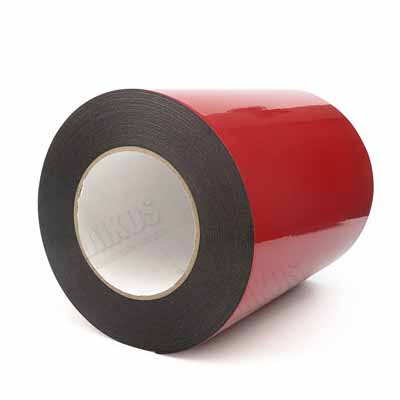Copper shielding tape is used in a wide range of applications and can be made from foil, tinned copper, conductive fabric, or both. The foil backing provides EMI shielding, while the tinned copper or conductive adhesive offers grounding and bonding. These tapes are also commonly used to wrap cables for EMI shielding and insulation purposes.
Shield your Strat Pickguard
Firstly, you need to make sure that your Strat is free from any EMI interference caused by electrical equipment nearby. The main cause of this is radio frequencies and electrostatic fields which are transmitted from other instruments or appliances to your guitar's electronics. This can produce unwanted feedback and can impede your guitar's performance. The solution is to create a Faraday cage around your guitar's electronic components.
You will need to cover the pickguard in strips of this tape - using a 50mm wide strip and overlapping each one by 5mm. You can lay down as many or as few strips as you like - just make sure that they all overlap each other and are fully conductive.
Once you have covered the whole of your pickguard, use a multimeter to test for conductivity. You should have full conductivity between any two points you test with your multimeter - this will help you to ensure that all the strips you have laid down are electrically conductive.
If you have any issues with the conductivity of your shield, it is a good idea to try another strip of tape - if this does not work, you may need to replace the strips of foil or copper tape or add more strips. This can be done quickly and easily if you have some spare time.
The most popular method of shielding your guitar is to apply foil or copper tape to the inside of your guitar's cavity. This is the easiest method and can be achieved in a few hours with very little skill required.
However, if you are looking for a tidy option, you can choose to use conductive shielding paint. This will require some work and can be expensive, but it is a good alternative to foil or copper tape.
This will create a clean, professional looking shield that can be used on a wide range of guitars. The downside is that it can be difficult to apply - there are lots of different shapes and curves in the cavity, so it will take a lot of effort to get a good, even coat on.
You will also need to connect your main ground wire to the shielding material as this is necessary for it to work correctly and provide you with a safe and noise-free guitar. The main ground wire is located at the bottom of your guitar's cavity near where the pots are attached.




